 In order to accomplish a lifté dancers need balance.
Photo by Yetzabell Rojas By Yetzabell Rojas
Staff
Stage performance is important for any dance company.
But for ConDanza Repertoire Company & Educational Community Outreach Project, it is also about transforming from a semi-professional company to a professional company.
“We hope that we can grow on a state level,” said Cesar R. Degollado, the founder of ConDanza. “We’re hoping that we can establish ourselves as a face of contemporary dance in Tucson.”
Degollado started the dance group in 2009. He named his company ConDanza. When translated from Spanish to English, ConDanza means “with dance.”
Degollado’s idea was that “with dance,” the company would succeed as a community outreach project. Starting with only six members, the troupe now counts 15 dancers who perform for free at after-school programs and fundraisers.
ConDanza hopes to establish a place for dance in education, just like other performing arts.
 ConDanza members follow their instructors’ directions during
rehearsal. Photo by Yetzabell Rojas “Dance is just as important as acting or any other art,” Degollado said.
Tony Juarez, 23, dances for ConDanza and attributes his growth as a person to the company.
“The company is a big part of my life,” Juarez said. “It taught me the value of discipline and commitment.”
Maddy Greene, 20, a member of ConDanza, said dancing helps with her fine art studies at the University of Arizona.
“I think it gives me a good work ethic,” Greene said. “It really gives me something to think about because I’m an artist at the U of A.”
ConDanza is located downtown on East Toole Avenue and North Fifth Avenue. The studio offers classes year-round for dancers 15 and older.
A dance class will be held this summer for children 14 and younger. Degollado hopes to create a year-round class for these young dancers.
By Marissa Alejandre
Staff
Hundreds of people gathered outside the Flandrau Science Center at the University of Arizona Tuesday, June 5, to view the transit of Venus, which occurs only twice a century.
“It’s a once in a lifetime event and we’ve known about it for a couple months now so we decided to come out,” said Eric Sahr, a geology major and president of the UA’s chapter of Students for the Exploration and Development of Space.
Michael Magee, the technical director of the transit event said that the transit of Venus occurs when Venus passes between Earth and the sun. He said it is much more difficult to see than a solar eclipse because Venus is “a tiny, little, black dot moving across [the sun].”
Viewing the transit unaided can damage the eye, so event officials sold safe solar viewing glasses. Local amateur astronomers even brought solar-filtered telescopes so the public could safely catch a glimpse of the “Morning Star.”
Flandrau observers also watched live streaming of the transit from the sky center on Mt. Lemmon, as well as observatories around the world.
"Dr. Larry Lebofsky also gave a lecture series about the history and significance of the Venus transit," said David Acklam, a docent from the UA’s Lunar and Planetary Laboratory.
All of the exhibit areas in Flandrau were also open to the public for free.
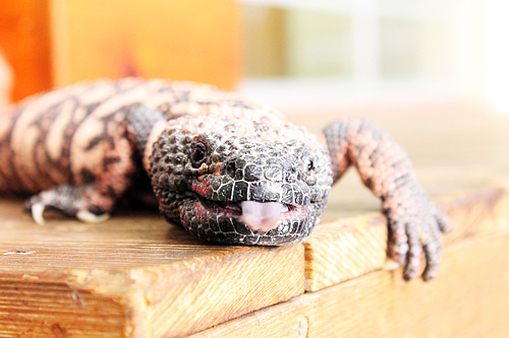 Outside of Dr. Cecil Schwalbe’s office, his Gila monster confronts the camera on June 7, 2012. Photo by Rachael Worthington
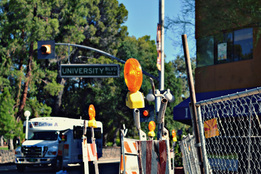 East University Boulevard and North Park Avenue marks
the starting point of University Boulevard construction.
Photographed by Lexie Alvarez By Lexie Alvarez
Staff
With the ongoing construction of the Tucson modern streetcar, some businesses are seeing a decrease in sales and daily store visits. Other stores, however, are using the construction to their advantage.
At first, Mark Levkowitz, the manager of the Chicago Music Store, was wary of the construction. His feelings changed, however, once construction started. “Now it makes us relatively easy to get to,” he said.
The Chicago Music Store will receive a $90,000 grant from Tucson Partnership to restore its historical façade.
The construction, however, is hurting other businesses just as much as it is helping them.
“I think it’s an unnecessary evil. It’s dirty and noisy. I just hope when they’re finished, it will bring more people to the area,” said Tom Cassidy, store owner of Ooo! Outside of Ordinary.
Inconvenience, noise, parking limitations, and timing are many factors that contribute to the demise of many businesses down the modern streetcar route.
“Any road construction typically barricades and slows down traffic,” said Steve Taylor, a Tucson business consultant. “People tend to avoid the area, take different routes and park other places, sometimes spontaneously. It’s their own perception that’s a big deal.”
The modern streetcar promises to bring in a new crowd of people to the downtown area and the University of Arizona campus. Businesses hope for increased sales.
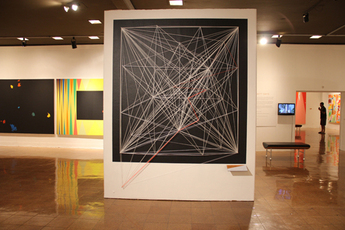 At the University of Arizona Museum of Art, Jake Hunnicutt and
Leon McNeil recreate the Sol LeWitt wall piece
No. 815. Photograph by Kathryn Burney By Kathryn Burney
Staff
Walking into the University of Arizona Museum of Art, the scratch of graphite on plaster whispered across the gallery, soon to be overpowered by the slam of hammer on nail.
Ladders, scattered throughout the rooms, jutted out like aluminum stalagmites. Artists, balanced precariously, work away on masterpieces.
In the exhibit, Sol LeWitt Days, local artists are getting the opportunity to work in teams as they follow the instructions made by the famous minimalist artist. Lauren Rabb, art curator, seems to be pleased.
“I’m so happy with it,” said Rabb. “It’s perfect, it’s fantastic, it’s exactly, you know, what Sol LeWitt would have wanted.”
When LeWitt started, he made all of his own work. As he grew in popularity and his pieces grew in complexity, he began to take young artists under his wing. Following his instructions, they would then make the pieces.
Jake Hunnicutt, a portrait artist, said he felt getting to explore his creativity through restrictions helps him to see LeWitt’s perspective. “The steps that he’s laid out for creating the art does give you the ability to maybe see the world a little bit through his lens and understand how he viewed art and how he viewed the world,” Hunnicutt said.
The visitors experienced art in an new way, by watching the artists as they worked.
“It allows [people] to see working art, living art. It allows them to come down and participate and ask questions and become more involved, which is really a unique experience,” Carolyn Sotelo said.
 Nibbler, a 3-year-old pug, enjoys his evening walk through
University of Arizona. Photo by Noelle Haro-Gomez By Jose Rivera
Staff
When the temperature rises in Pima County, animal-affiliated programs stay on their paws.
All over Tucson, animal organizations are giving advice about proper guidelines for pet owners dealing with the rise in heat. Despite these helpful guidelines,the number of animals suffering from heat stress is increasing at Pima Animal Care Center (PACC).
“We get more calls during this time of the year. Most of them consist of stray animals,” said Jayne Cundy, representative of PACC. “We had 423 calls last month (May) that consisted of welfare calls.”
Welfare calls report animals without water, wandering the streets and being injured. So far this year, 3,399 calls have come into the PACC regarding animal welfare.
The longer the time that animals spend outside in the sun, the greater their stress level. As the weather hits record highs, animals need to keep cool.
“All animals can get stressed in the heat – people, dogs, cats, etc.,” said Dr. Nobel Jackson, a lecturer in veterinary science and microbiology at the University of Arizona. “Pets need shade just as [much as] humans [do] to get cool. Heat strokes are certainly a risk when anyone is out in the sun for a long amount of time.”
However, with 100-degree weather hitting the area earlier in the year, local pet owners have their own ideas of beating the heat.
“I carry a gallon of water with me when I’m walking my pet just in case there’s no water around,” said Catlin Swartz, a UA student and owner of a 15-month-old pug named Nibbler. “Pugs and other different breeds of dogs have to live in weather that’s under 90 degrees, so part of carrying a gallon of water is to pour some on my pet so he won’t overheat.”
However, the average rate of pets falling victim to heat strokes and other weather-related health issues are low, according to the PACC.
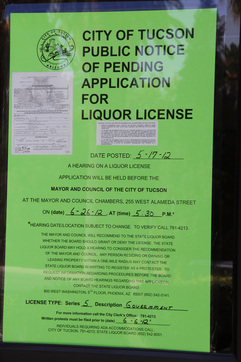 Liquor pending sign hangs outside of Centennial Hall.
Photo by Carolyn Corcoran By Carolyn Corcoran
Staff
The University of Arizona will sell alcohol at special events held in several buildings, pending the approval of liquor license applications.
With alcohol sales being restricted to seven UA buildings, university officials do not believe that the licenses will have repercussions on campus.
“It really doesn’t affect the campus at all,” said Joel Hauff, interim director for the Arizona Student Unions. “At the end of the day, it’s just procedural change for us.”
The seven buildings include the Student Union Memorial Center, Centennial Hall, Arizona State Museum, College of Fine Arts, Arizona Stadium, McClelland Hall and Biosphere 2. All have hosted events with alcohol before.
From fundraisers to skyboxes at the stadium, alcohol has previously been available if the establishment had obtained the necessary permit for the special event.
“We tend to have events fairly often in those buildings,” Hauff said.
The license will give UA the ability to sell alcohol at the buildings for special events without having to apply for individual permits.
By having a license, the application, wait time and permit fee are eliminated.
Though chatter about the licenses began last year, some community members have yet to be informed.
Jordi Carvalho, general manager of Wilko, a locally owned restaurant on University Boulevard, knew nothing about the pending licenses.
She predicts that the licenses will affect their pool of customers.
“They won’t pre-party here,” Carvalho said. “I think it will hurt the university strip as far as pre-party and post-party, but it’ll keep (the students) safe.”
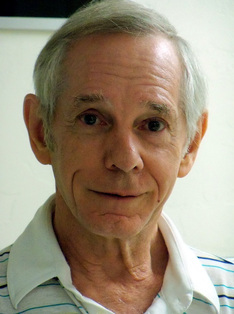 Father Corbally, who has worked with the Vatican
Observatory in the University of Arizona since 1984.
Photo by Hayleigh Daugherty By Hayleigh Daugherty
Staff
The average person visiting the University of Arizona probably would not guess that Jesuit priests, under the authority of the Vatican, have their observatory offices on campus. Those who have heard of the astronomers hold many misconceptions concerning the men of God studying the skies, according to Father Christopher Corbally.
“We are here to do good science for the church, not that the church has an agenda,” Corbally said. “We’re not looking for the aliens before anyone else so we can baptize them, despite headlines you will see.”
Corbally, a Jesuit priest with his doctorate in astronomy, has been working in Arizona with the Vatican Observatory Research Group since 1984, just three years after it opened in Tucson.
Not all claims against the Holy See’s astronomy team seem so far-fetched, however. With the popular stories in history textbooks focusing on the church’s opposition to Galileo, it’s easy to wonder if the Vatican’s astronomers allow Catholic dogma to interfere with research. Corbally insists this is as true as the search for extraterrestrial conversion.
“Science and theology go their own ways with their own methods,” Corbally said.
At the same time, faith is not completely abandoned from the Jesuit astronomers’ view of science. Science “doesn’t answer all the questions, the questions of the whole and the part,” he said. “We are very matter based, but not completely matter based, and that is what can’t be answered by chemistry or physics.”
The Jesuits working at the university believe Christianity and astronomy work hand in hand. “A scientist who has faith finds joy not just in the discoveries but also finds joy that in sharing that discovery is sharing God’s own joy. … The religious scientist also joins in the joy of creation,” Corbally said.
Professor Chris Impey, deputy head of the Department of Astronomy, has worked with the priests since 1986 and agrees that the notions of doctrine affecting research are completely false.
Audio by Varun Bajaj Supervisor Melissa Guz By Varun Bajaj
Staff
In an effort to decrease spending, the Arizona Board of Regents decided to reduce the ABOR High Honors Tuition Scholarship in Sept. 2010. Starting in 2013, Arizona students will not be offered full tuition waivers by achieving an exceeding score on all three Arizona Instruments to Measure Standards exams.
To combat the cut, high school counselors, like Jill Ronsman of Tucson High Magnet School, have provided students with Career and College Centers to help students find financial aid and scholarship opportunities.
“The more you look, the more you research [scholarships], the money is there. And you can probably earn more money by spending your time looking for scholarships and applying than you can working at, you know, at a fast food on the weekends,” Ronsman said.
Though she feels like a student can still find scholarships, she went on to discuss her fears with the AIMS scholarship deduction.
“I do feel that a lot of our students won’t be able to go, or at least start, at the University due to the AIMS tuition waiver,” she said.
Kasey Urquidez, University of Arizona Dean of Admissions, said that the AIMS reductions won’t affect future enrollment.
“I don’t feel like it’s going to decrease the amount of students that have the opportunity to come to school because the AIMS award isn’t there. We will continue to reach out to the students broadly and make sure they have a good understanding of what merit and need based aids are available,” she stated.
The UA spends 17 percent of tuition income on financial aid and scholarships.
“No money [of the 17 percent] is being removed and used other places or to fund other things. It’s still going to go to students,” Urquidez said.
 Anna Rowland, 17, takes a breather during ballet class at the ConDanza Dance Studio. Photograph by Yetzabell Rojas
|










